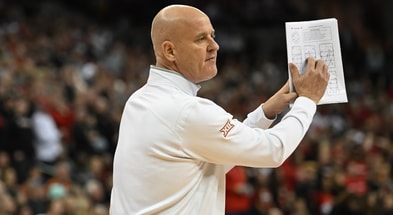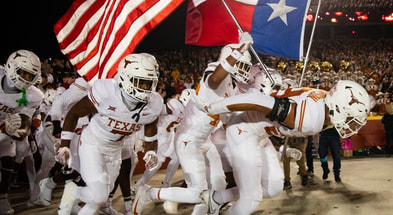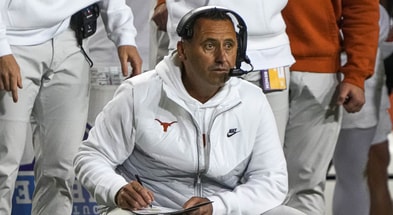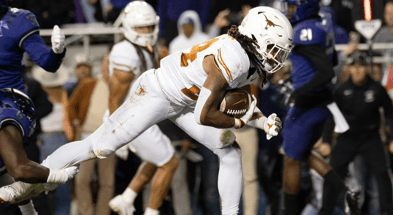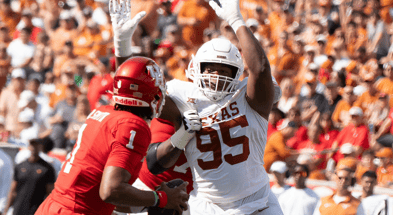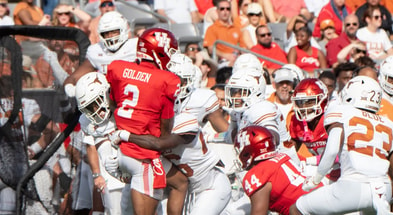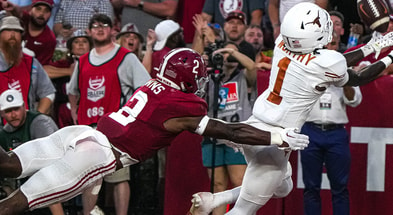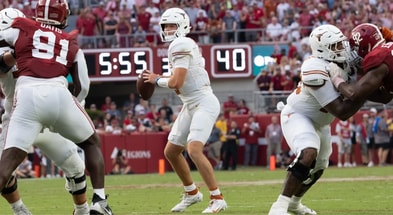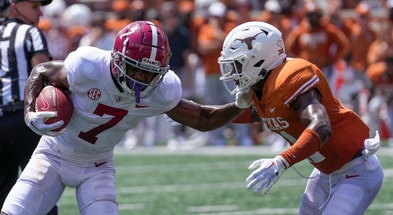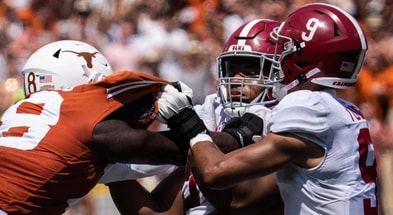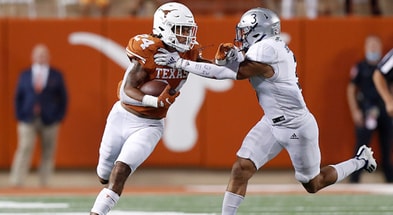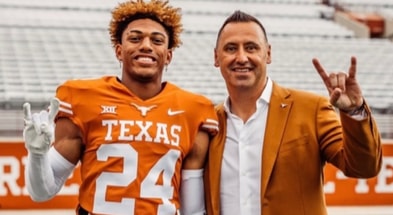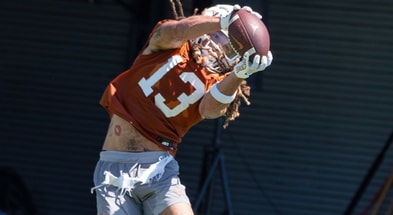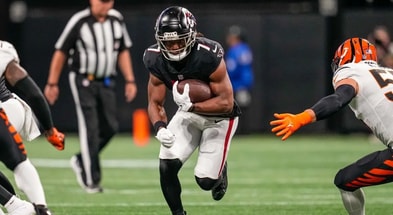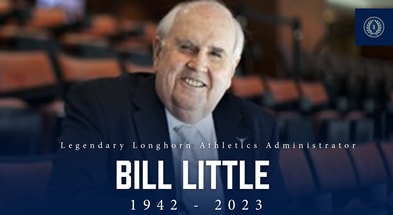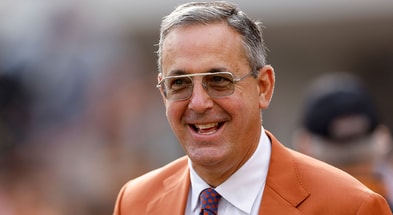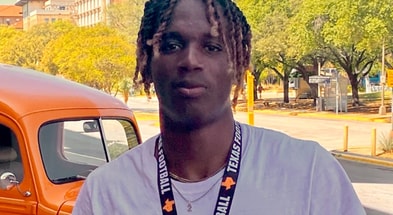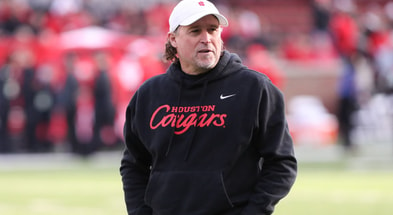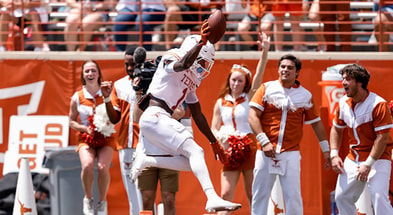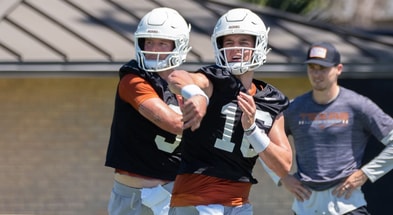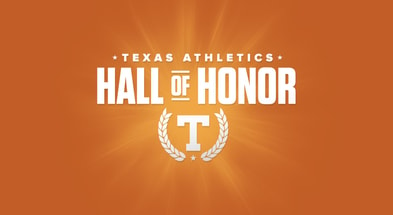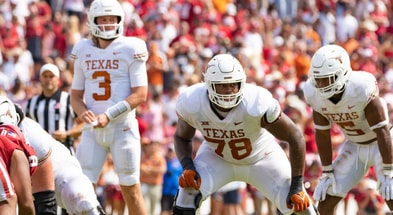Scouting the Big 12's new transfer quarterbacks
The 2021 season was the very worst for Big 12 quarterbacks I believe I’ve seen in my entire life.
Spencer Sanders was named 1st team All-Big 12 quarterback by the coaches and then played in the Big 12 championship game without his transfer center, tight end, or main running back to carry the way on the ground. Charged with carrying the offense, Sanders attempted 46 passes for 247 yards at 5.4 ypa with zero touchdowns and four interceptions.
He did rebound with a great game against Notre Dame in the Fiesta Bowl but you get the idea. Sanders was basically the default first team quarterback and when asked to win a title for his team was an active detriment to their efforts. Second team was Brock “pump fake” Purdy, who was better at carrying his team than Sanders and arguably should have been first team, but had a similar penchant for throwing games away with picks.
But check out the leading rushers in Big 12 play:
- Breece Hall (Iowa State): 193 carries for 1,234 yards at 6.4 ypc with 16 touchdowns.
- Bijan Robinson (Texas): 143 carries for 828 yards at 5.8 ypc with six touchdowns.
- Abram Smith (Baylor): 157 carries for 934 yards at 5.9 ypc with five touchdowns.
- Kennedy Brooks (OU): 150 carries for 901 yards at 6.0 ypc with seven touchdowns.
- Deuce Vaughn (K-State): 152 carries for 887 yards at 5.8 ypc with 10 touchdowns.
- Jaylen Warren (OSU): 185 carries for 870 yards at 4.7 ypc with seven touchdowns.
- Leddie Brown (WVU): 172 carries for 800 yards at 4.7 ypc with eight touchdowns.
- Kendre Miller (TCU): 66 carries for 524 yards at 7.9 ypc with five touchdowns.
- Neal Brown (Kansas): 129 carries for 559 yards at 4.3 ypc with six touchdowns.
That’s the top nine in conference only rushing yards. No. 10 is Texas’ Roschon Johnson and if you get to no. 12 you reach the only unrepresented team above with Texas Tech’s SaRodorick Thompson with 89 carries for 409 yards at 4.6 ypc with eight touchdowns.
It was a “run the ball and play defense” league in 2021, which was bizarre to witness. The part where everyone played better defense was enabled quite a bit by the part where everyone ran the ball and didn’t play as well at quarterback.
Don’t expect the same in 2022. We’ve already seen three quarterbacks transfer in who, along with some returning players could have a big role in shapen’ the Big 12 race next season. Let’s scout some of the incoming talents.
Quinn Ewers: Texas via Ohio State
Ewers has to beat out Hudson Card for the starting job, an underrappreciated passing talent in his own right who flashed a lot of ability but also looked like he needed more confidence and reps before handling QB1 responsibility.
However Card will have to gain confidence and improve this offseason to win the job again in fall camp as Ewers is a very special talent. We didn’t see Ewers do naught but hand off on tight zone in garbage time at Ohio State last season, but at Southlake Carroll he orchestrated a high-powered spread scheme with the full gamut of quarterback schemes. They ran full field RPOs, play-action shots, dropback passing (often throwing tagged routes on 4-verticals), and some zone-option.
Ewers was rated a perfect 1.00 in the rankings due to his arm talent (he can hit about any throw from any arm angle and often throws with anticipation) and is also now about 6-foot-3, 215 pounds with something in the vicinity of 4.6 speed. Just a high-powered overall athlete.
Between Ewers’ arrival for spring practice and Card’s necessary growth to hold the job, Texas’ ability to land shots to Xavier Worthy figures to be increased next season. Add in Wyoming’s touchdown machine Isaiah Neyor opposite Worthy and you have a clear list of job responsibilities for Texas’ QB1.
Texas’ plan next season seems obvious enough to this observer. The defense proved to be pretty far away last season but the offense was pretty close. They lose their most reliable offensive tackle (Derek Kerstetter) but otherwise return four linemen who played a lot, star skill players Bijan Robinson and Xavier Worthy, and most everyone else from the starting lineup save for the tight ends.
The goal will be to attack downfield with even greater vigor and ability than in 2020 (Casey Thompson lead the Big 12 in conference touchdown passes with 21 despite being pulled early from two league games) and just outscore opponents. Quinn Ewers fits that bill quite easily and with Texas’ returning as many running backs as they do, it’s likely they’ll aim to make his job simple if he wins the job, focusing on long throws outside the hash marks to 1-on-1 targets in space created by the run game.
Here’s a glimpse into how high school defenses were treating Ewers at the end of his time at SLC:
It’s very easy to imagine Texas employing a similar approach in asking Ewers to hit deep throws to Neyor and Worthy only to open the box back up for Bijan Robinson and Roschon Johnson. I wouldn’t expect the redshirt freshman signal-caller to be asked to carry a heavy load in the offense in terms of decision-making, protection checks, or regular progression passing in year one.
Dillon Gabriel: Oklahoma via Central Florida
Unlike Ewers, Gabriel is a much more sure thing to start immediately. I mean, I think most expect Ewers to start immediately but it’d be a shock if Gabriel wasn’t the guy for Oklahoma next season.
He has 2 1/4 seasons under his belt already after starting as a freshman for new Oklahoma offensive coordinator Jeff Lebby back in 2019 at UCF. Gabriel is much of a traditional Big 12 star quarterback than Ewers or his predecessors Kyler Murray, Jalen Hurts, Spencer Rattler, or Caleb Williams.
By that I mean that he doesn’t have elite size or traits. He’s listed at 6-foot-0, 200 pounds, I think 5-foot-11, 195 may be closer but he’s not tiny. Gabriel has a lot of quickness, is pretty accurate, and has enough arm to push it down the field:
The concern for Oklahoma with Gabriel is just in the step up in competition and defensive wizardry. These Veer and Shoot coaches like Lebby tend to let tempo, spacing, and run/pass conflicts do most of the heavy lifting for their offense and quarterback.
What’s the coverage? Wide splits can make that pretty obvious.
Who’s open? The best guy who’s matched up on the worst guy. Or the guy running into a spot vacated by a defender trying to stop the run.
What protection do we use? The “we’re going to run the ball and go fast so your pass-rushers don’t have the clarity or energy to get after us” protection.
Well, some of the challenges the Veer and Shoot can present have been solved by the Flyover defense. Tulsa (under new TCU defensive coordinator Joe Gillespie) ran the Flyover at them and gave Gabriel fits. It was like watching an old Air Raid quarterback face a drop eight scheme for the first time. “What’s happening? Why is no one open???”
Only in this instance, the Flyover made it easier for the defense to A) eliminate run/pass conflicts and B) reintroduce confusion about who’s doing what after the snap.
You can watch the games and see the hesitation and negative plays which result as Gabriel drops back and finds something different than he expected.
Gabriel’s 2020 performance against Tulsa was better than the numbers would suggest. He went 28-51 for 330 yards at 6.5 ypa with a touchdown and an interception. Tulsa’s 3-safety designs were really tough on the Veer and Shoot, especially once they started mixing in more Cover 2 on the solo-side receiver after Gabriel caught them there with a few shots.
There was nothing easy, just comebacks, hitches, and whatever Gabriel could manage with the scramble. The UCF run game was shut down and Tulsa’s front seven, which included stars like Zaven Collins, inflicted 10 tackles for loss and killed some drives with pressure.
For all that, Gabriel knows this system very well, can make the plays it sets up, and can create extra plays with the scramble as well. It’s hard to imagine him failing to guide Oklahoma to a very effective season on offense with all of their talent.
Adrian Martinez: Kansas State via Nebraska
This was a pretty solid year for Adrian Martinez. He attempted 306 passes for 2,867 yards at 9.4 ypa with 14 touchdowns but 10 interceptions. Martinez also ran the ball 131 times for 512 yards (before removing sack yardage) at 3.9 ypc with 13 more touchdowns.
He’s a good athlete checking in at 6-foot-2, 210 pounds with the quickness to execute the spread-option game and the size to hold up over the course of the year while doing so.
K-State was looking down the barrel of a season where Will Howard was going to have to run the ball 200x for the Wildcats to be any good on offense (although I thought that was feasible) until they pulled off this transfer.
Martinez allows them to basically “run it back” with the Skylar Thompson offense. He has a similar skill set, loads of experience, and a better track record of staying healthy. He’s also had a knack for throwing more picks but this is still a big win for the Wildcats.
The Wildcats could now bring back all of their skill weapons save for tight end Daniel Imatorbhebhe. Martinez throwing to super seniors Malik Knowles and Phillip Brooks with Deuce Vaughn moving around makes for intriguing possibilities on offense. They’ll definitely maintain a heavy option element, it’s where Martinez is at his best and it’ll match new offensive coordinator Collin Klein’s expertise. Martinez also has a strong arm and can hit some play-action throws or tighter windows, sometimes to his own detriment as he’ll take some chances.
Another good comp for his style of play is probably J.T. Barrett of Ohio State, but he’s both a little less durable, more talented as a thrower, but less reliable as a decision-maker. Like Barrett did, Martinez has a lot of quickness, power, and willingness to run the ball between the tackles or off-tackle which should pair nicely with his 5-foot-6, 170-pound water bug backfield mate.
All of these guys were brought in to play and because they have skills which fit the direction each team wants to take on offense. The Longhorns want to take shots down the field with a pro-style play-action game and Ewers was born to do it. Oklahoma is installing a new offense with a more college-style approach to play-action shots and Dillon Gabriel was running this very offense the last several years. Kansas State has been something of a spread-option team for the last year or so as it is and will likely pivot further in that direction. Traditionally the best K-State teams of the 2000’s were copying what Nebraska was doing so this is really fitting in a sense.
In a future post we’ll scout some of the returning quarterbacks and up and comers but one thing is already clear, the league is poised to be better at the position than a year ago.
Which transfer quarterback is best? Discuss for free on the Flyover Football board!
